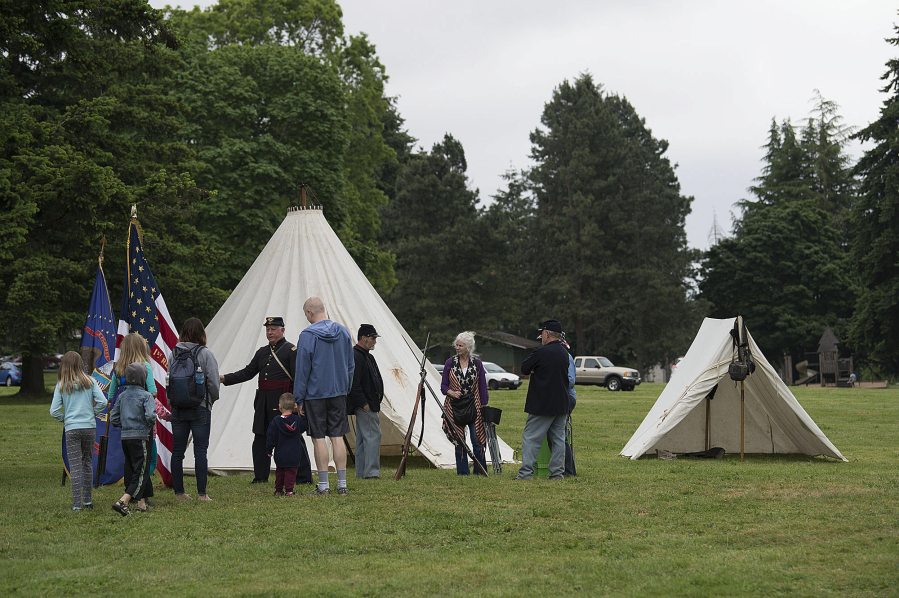During the Memorial Day Observance on Monday at the Fort Vancouver National Historic Site, emcee Larry Smith asked veterans of the Gulf, Vietnam and Korean wars, as well as World War II, to stand and be recognized.
But the presence of soldiers (or at least their legacies) from more distant wars wasn’t far from the event. As the observance unfolded, a group of volunteers clad in wool uniforms clutching black powder muzzleloader rifles (weapons that took nine steps to load) stood outside a replica Civil War-era military bivouac, a temporary camp used by soldiers.
“The least authentic thing is my being really old,” joked Mitch Rice, a 65-year-old who pointed out that a typical soldier from the era was age 25. “You wouldn’t have a really old soldier.”
The volunteers were from 1st Oregon Volunteer Infantry, a nonprofit that holds battle re-enactments and other “living history” events intended to give the public a feel for the past.
Mike Twist, interpretive park ranger and historic weapons coordinator at the Fort Vancouver National Historic Site, said that the site works with the volunteers to reach the public and educate them about the role of the Pacific Northwest’s military during the Civil War.
He said that when the Civil War broke out in 1861, the region still needed a military presence to keep the peace between pioneers and natives while also building roads and keeping Southern sympathizers in line. He said that the federal government recruited young men from California who had headed west to find their fortunes but had become unemployed or underemployed.
The bivouac provides a reminder of that time in local history.
“It engages your brain and all of your senses and lets you step back a little bit in time,” Twist said. “I think it’s a fantastic way to keep the memory of a generation who are no longer here.”
Rice stood outside a replica of a Sibley tent, a cone-shaped shelter made from heavy cotton where a dozen men could sleep. He said that none of the items there were originals, but the historic record is detailed enough to reproduce many of the day-to-day objects from the era.
He said that when a solider enlisted, he was issued a wool jacket and pants that were breathable enough to keep relatively cool in the summer.
“Everything is wool, cotton, linen or silks,” he said, noting that the latter was still rare. “Those were the only fabrics around.”
He wore a canteen and a haversack, a bag that soldiers used to carry personal belongings and other items. Around his waist, Rice wore a burgundy sash signifying his status as an officer.
Nathan Fuller, another volunteer, wore a sheath for his bayonet, a kepi hat and a “sack coat.” When asked why it’s called a “sack coat,” Fuller explained that it might be a little tight or loose and it “fits like a sack.”
“I think it’s the best way to show people where we came from,” he said.




